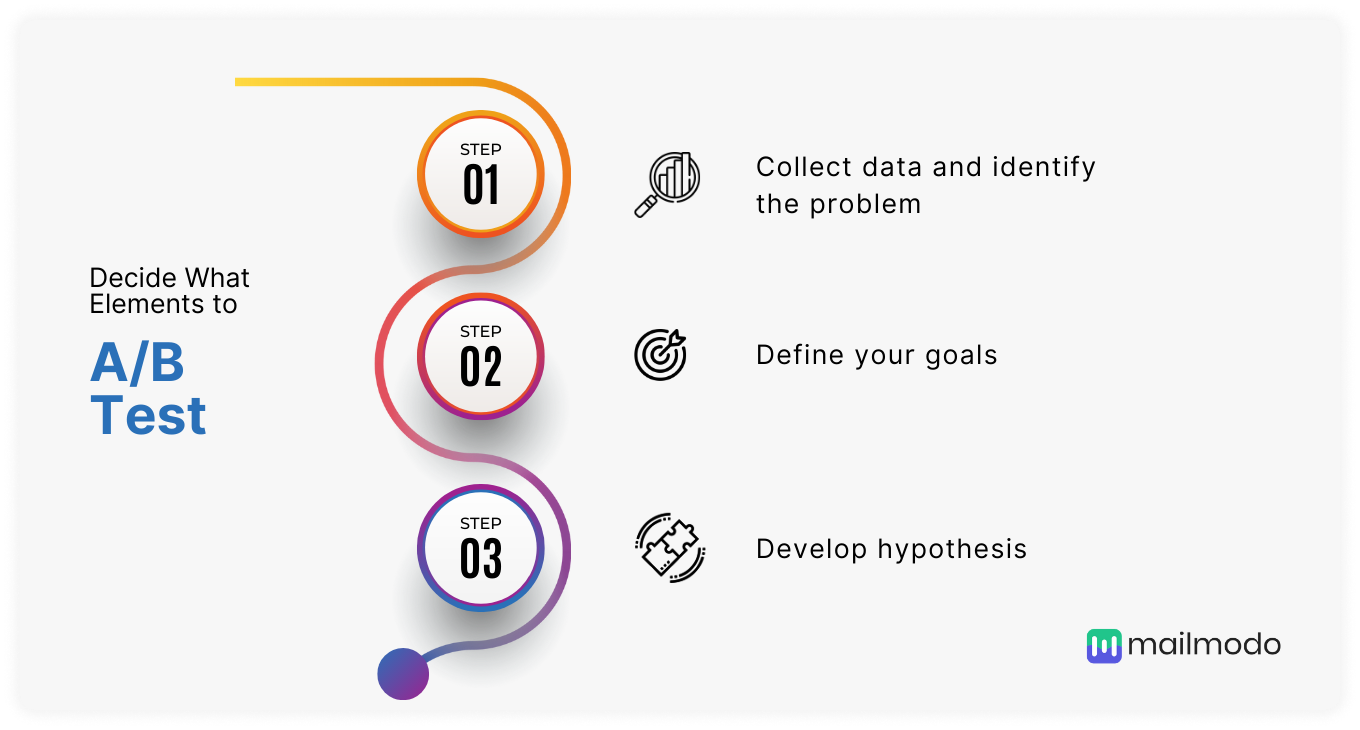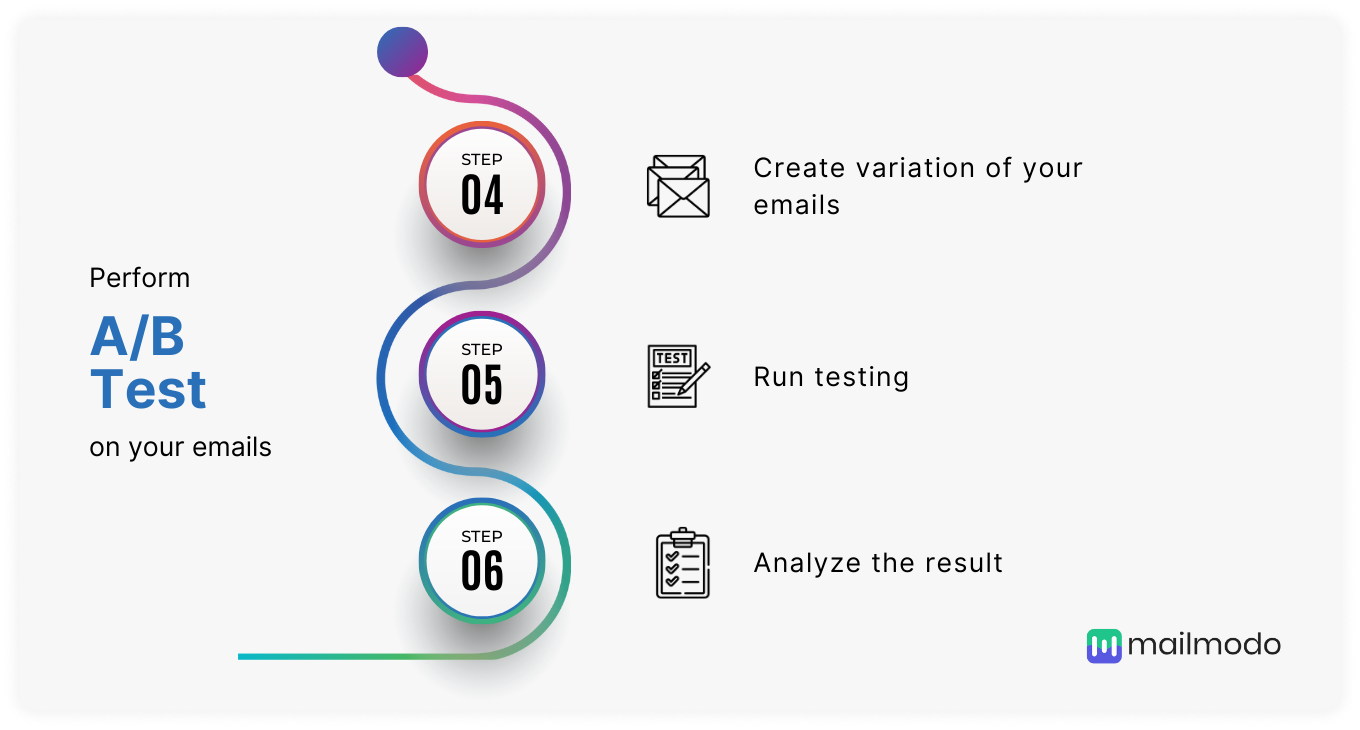As an email marketer, you know how important it is to optimize your email campaigns for better performance. One of the fundamental ways to do this is by A/B testing your emails.
According to research conducted by Litmus, businesses that A/B test every email see 37% higher ROI than those that never do the A/B test.
This guide will show you what email A/B testing is, how it works, its benefits, and best practices to carry it out.
Table of contents
- What is email A/B testing?
- Why should you A/B test your emails?
- How to decide what elements to A/B test?
- How to perform A/B testing on your emails?
- How long should your email A/B tests run?
- Email A/B testing best practices
- Start A/B testing your emails today
What is email A/B testing?
A/B testing in email marketing is a trial run in which you test different variations of a similar email campaign. Then, you send these email variations to two different segments of your audience.
The purpose behind A/B testing email is to figure out which email variant generates the best results and improves your email metrics. The version that shows positive metrics such as improved open rates and conversion rates is termed a “winner.”
In simple terms, think about the experiment you did in school when you put two unripe bananas in two different packaging - one in a paper bag, the other in a plastic bag. The result would be different for both the packaging. In the same way, A/B testing your emails can help you identify which version is generating better results.
Why should you A/B test your emails?
It is challenging to guess what is working and what is not. And if you guess wrong, it could be a waste of your time and resources. So here's where A/B testing comes into play.
Email marketing A/B testing helps you build data-backed decisions to achieve your goals and can benefit your email marketing campaign in the following manner:
✅ Increase open and click-through rates
A/B testing different subject lines can help you identify which subject line resonated most with your audience.
For instance, you might find that a personalized subject line prompts more users to open their emails. Then you can use this tactic to increase your open and click-through rates.
✅ Cost and time effective
Creating the email design and layout, subject lines, and more takes considerable money and time. Being oblivious to which element isn’t working can lead to needless expenditure. A/B testing 2 or 3 elements can help determine which feature provides a more engaging user experience. Then, you can implement those changes, get statistically higher returns on your investment, and save time.
Also read: Why You Should Test Your Emails Before Sending Them
How to decide what elements to A/B test?

Follow these steps to decide what to test in your email marketing campaigns:
1. Collect data and identify the problem
The first thing you need to do is collect data using email analytics. Then, look at various metrics and determine which metric is not performing well.
2. Define your goals
Now, decide which metric you want to improve. Make sure your goals are clear, measurable, and achievable.
3. Formulate hypothesis
Hypotheses are the assumptions made on datasets to prove how a particular variation might perform better than the other. Keep your goals in mind while formulating your hypothesis.
For example, a hypothesis that helps give your testing a direction. If you develop multiple hypotheses, prioritize them according to your relevance.
This table summarizes the different elements of your email you can test:
| Data collection and problem identification | Goals | What to test (Hypothesis) |
|---|---|---|
| Email open rate is low | Improve open rates | Email subject line and pre-header text |
| CTOR is low | Boost click-through rates | Content of your email and the layout and design of your emails |
| CTOR and conversion is low | Boost conversions and ROI | Call-to-action |
How to perform A/B testing on your emails?

After developing your hypothesis, you can start testing your email in the following manner:
4. Create variations of your email
Make variations in different elements of your email, which you will test.
For example - you can create two personalized subject lines or use a button as CTA rather than a text. Doing so will help you determine which version seems more engaging to your audience.
Learn more about email personalization - An Ultimate Guide to Creating Personalized Emails
5. Run email A/B testing
Now that your email variations are ready, it’s time to run the test. Kick off your trial run by sending one version to a subset of the audience and the other to a different subset. Monitor the interaction of your audience, and collect data using different metrics.
6. Analyze the results
Then, compare the result of both versions and identify a champion version. You can now use this champion version to garner good returns by sending it to different segments of users.
If the results you get through the variant version are not good, try testing with a different element. This A/B test process can continue until you get the desired result.
How long should your email A/B tests run?
A question that might arise while A/B testing is how long you should run your tests? Well, there is no definitive answer to this question. A lot of factors contribute while deciding the duration of your A/B testing. Some of them include - your business goals, audience size, metrics you want to test, email marketing budget, etc.
A survey conducted by Mailchimp reflects the estimated time it took to generate results depending on the metrics.
A winner was selected in 2 hours for the open rate in 80% of the cases. At the same time, they chose a champion version for the Click rate in just 1-hour.
In the case of revenue generation, it took 12 hours to find a champion version successfully.
So, it is pretty clear that there is no pre-defined time frame for running your testing. However, letting your tests run for adequate time will give you more confidence while deciding the champion version of your email.
Email A/B testing best practices
Much of your organization’s success depends on how you carry out email A/B testing and draw insights from data to increase conversions. That is why you must follow the correct practices.
Here are two of the most important practice that many email marketers forget to follow:
Test emails simultaneously: Timing of your email testing matters. There are chances that if you run your testing at different times, you may get skewed results. Thus, it is crucial to simultaneously carry out an email A/B test to get optimum results.
Use a representative sample size of your subscribers: It is imperative to choose a suitable set of audiences having similar interests, behaviors, locations, etc. Testing your email by sending them to the wrong audience may not yield the desired results.
Start A/B testing your emails today
Now, it's time to put A/B testing into practice. First, look at your email analytics and determine what you want to test in your email. And then choose tools that provide you affordability, insightful data, as well as the flexibility to experiment with variables.
With Mailmodo, you will be able to alter and send interactive variations of your emails. This, in turn, will help you generate higher ROI from your email campaigns. Additionally, when you sign up with Mailmodo, you get a free trial with unlimited credits.
So, what are you waiting for? Start A/B testing today with Mailmodo.

